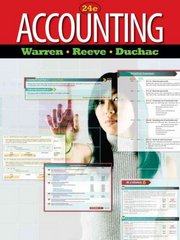Question
THE IMPACT OF THE GLOBAL FINANCIAL CRISIS ON IAS39 FINANCIAL INSTRUMENTS: RECOGNITION AND MEASUREMENT The financial crisis of the late 2000s resulted in the collapse
THE IMPACT OF THE GLOBAL FINANCIAL CRISIS ON IAS39 FINANCIAL INSTRUMENTS: RECOGNITION AND MEASUREMENT The financial crisis of the late 2000s resulted in the collapse of many large financial institutions, the bailout of banks by national governments and downturns in world stock markets. Among the scapegoats blamed for the crisis was fair value accounting rules. The argument was that companies were forced by fair value accounting to write down their assets to what they hoped was temporarily irrational prices. These write-downs supposedly exacerbated market downturns. Possibly in response to these arguments and to threats by the European Union to override international accounting standards, the International Accounting Standards Board changed its rules in IAS39 on balance sheet classifications so that companies could shift many of their financial assets out of categories where fair value accounting was required. This meant a company holding 'dodgy' bonds could delay recognition of future losses on those bonds by simply changing their category on the balance sheet. Such an action is possible because the changes to IAS39 meant that financial assets could be classified four ways: as fair value through profit or loss, as available for sale, as held to maturity, and as loans and receivables. The first two classifications require financial assets to be marked to market, with those classified as the first category requiring changes in value to go through the income statement, while changes in value for those classified as available for sale would not impact on the income statement. The other classifications allow companies to avoid using fair values on the balance sheet. In 2009, the Financial Accounting Standards Board also changed its comparable standard to allow companies to keep losses on impaired financial instruments out of net income. QUESTIONS 1.Suppose you are a company holding large quantities of financial instruments the market value of which had declined markedly since purchase. How would you classify those instruments and why? 2.Compared to the pre-change IAS39, what are the likely impacts of the changes to IAS39 on balance sheet values of companies holding large amounts of financial instruments? 3.Will companies with large holdings of dodgy financial instruments be motivated to disclose information about those instruments? Give reasons for your answer. 4.What types of companies are likely to be affected greatly by the changes to IAS39?
Rankin, Michaela, Kimberly Ferlauto, Susan McGowan, Patricia Stanton. Contemporary issues in accounting
Step by Step Solution
There are 3 Steps involved in it
Step: 1

Get Instant Access to Expert-Tailored Solutions
See step-by-step solutions with expert insights and AI powered tools for academic success
Step: 2

Step: 3

Ace Your Homework with AI
Get the answers you need in no time with our AI-driven, step-by-step assistance
Get Started


